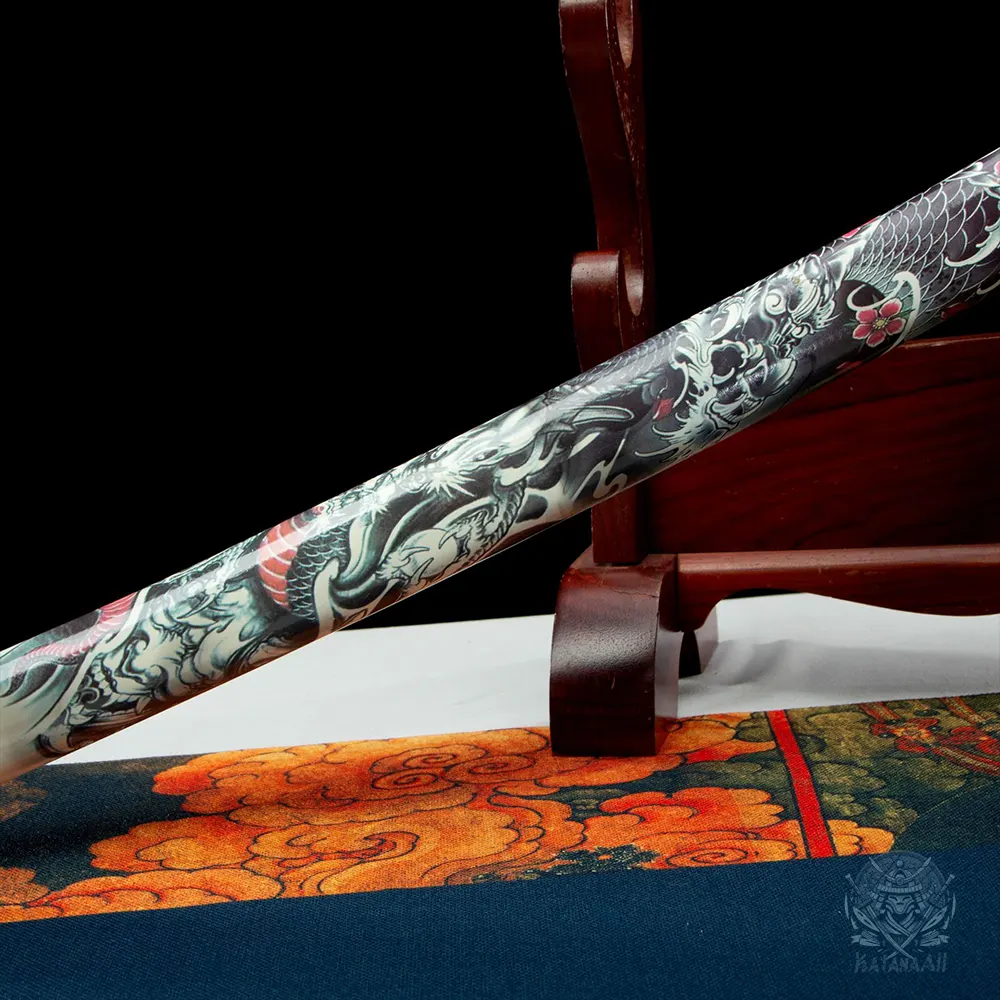Display vs. Functional Katana: Which One Should You Choose?

If you’re a katana enthusiast, you’ve probably found yourself in a bit of a dilemma: display or functional katana? I’ve been down this road myself, and as someone who’s spent years practicing with katanas and collecting them, I can tell you this is not a decision to take lightly. Both types have their appeal, but they serve entirely different purposes. So, let’s talk about the display vs. functional katana debate and see which one suits your needs best.
What Makes a Katana Functional or Decorative?
First off, let’s get clear on what we mean by functional and display katana. This is the first step in making an informed decision. A functional katana is made to be used, whether for cutting practice (like Tameshigiri), martial arts training, or as a tool for real-life combat (in historical contexts, of course). On the other hand, a display katana is designed for aesthetic appeal—something to hang on the wall, sit on your bookshelf, or showcase in a display case.
I remember the first katana I ever got my hands on—it was a beautifully crafted display katana. It was the kind of blade you could look at all day and appreciate for its fine craftsmanship and elegant design. But as I got deeper into katana training, I realized that owning a functional katana was a whole different experience. The weight, the feel, the balance—it’s all so much more dynamic.
What to Expect from a Display Katana
A display katana is all about beauty. These swords are often decorative pieces, so they’re not meant for the grind of actual sword practice or cutting. But that doesn’t mean they’re not impressive. In fact, display katanas can be incredibly intricate and stunning to look at.
Key Features of Display Katanas:
- Appearance over Functionality: These swords are made to impress visually, often featuring intricate handguards (tsuba), decorative saya (scabbard), and beautifully polished blades.
- Lightweight: Display katanas are often lighter than functional swords because they don’t need to withstand the impact of cutting or training.
- Decorative Materials: They tend to use softer metals for the blade (often stainless steel or other decorative alloys), which looks great but lacks the cutting performance of traditional steel.
| Feature | Display Katana |
|---|---|
| Primary Purpose | Designed for decoration and aesthetic appeal |
| Blade Material | Stainless steel or other decorative alloys |
| Weight | Lightweight for easy hanging or mounting |
| Durability | Not meant for heavy use or cutting |
| Best For | Home decor, collectors, and sword enthusiasts |
| Price | More affordable than functional katanas |
Pros of Display Katanas:
- Stunning visual appeal: The craftsmanship is often the focal point, with many display katanas being handcrafted and ornately decorated.
- Great for decor: If you’re looking to add a samurai-inspired touch to your home office or living room, a display katana is perfect. It’ll become a conversation piece for sure.
- Affordable: Display katanas are usually less expensive than functional katanas, making them accessible to a wider audience.
Cons of Display Katanas:
- Not for cutting or use: You can admire the beauty, but it’s not made for practice or real use. Attempting to cut with a display katana will likely result in a damaged blade.
- Lower quality: The blade won’t hold up under real-world conditions, so don’t expect to get long-term durability or performance from a display katana.
What Makes a Katana Functional?
A functional katana is designed to be used in real training or practical situations. If you’re involved in Kenjutsu, Iaido, or Tameshigiri, you’re going to need a functional katana—one that’s built to withstand real-world action.
Key Features of Functional Katanas:
- High-quality materials: These swords are often made from high-carbon steel (such as 1060 or 1095 steel) that’s heat-treated for durability and strength.
- Sharp and ready for use: A functional katana is sharpened and can actually be used for cutting exercises or combat training.
- Weight and balance: Unlike display katanas, these swords are built to feel authentic and balanced, just like the traditional swords used by samurai.
| Feature | Functional Katana |
|---|---|
| Primary Purpose | Designed for martial arts, cutting, and real-world use |
| Blade Material | High-carbon steel or Tamahagane for traditional katanas |
| Weight | Balanced to handle real cutting and training |
| Durability | Strong, durable, and able to withstand real use |
| Best For | Sword practitioners, cutting enthusiasts, and martial artists |
| Price | Higher cost due to materials and craftsmanship |
Pros of Functional Katanas:
- Ready for action: If you’re serious about swordsmanship, a functional katana will allow you to practice cutting (Tameshigiri) or use it in martial arts training.
- High durability: A high-carbon steel katana is built to last, giving you a weapon that holds an edge and performs during heavy practice.
- Authentic experience: When you hold a functional katana, you’ll feel the balance and weight that’s true to traditional swords. It’s powerful, and you’ll experience it with every cut you make.
Cons of Functional Katanas:
- Higher cost: Functional katanas are often more expensive than display swords due to the quality of the materials and craftsmanship involved.
- Care and maintenance: These blades require more maintenance, including regular cleaning, sharpening, and storage to avoid rust or damage.
- Storage: A functional katana needs proper storage, as it should be kept in a safe place to prevent damage or injury.
Display vs. Functional Katana: Which One Should You Choose?
Now, let’s sum up the key differences so you can make a better decision:
| Feature | Display Katana | Functional Katana |
|---|---|---|
| Primary Use | Decorative, for admiration and display | For training, cutting, and martial arts |
| Materials | Stainless steel, decorative alloys | High-carbon steel, Tamahagane, or high-end metals |
| Weight | Light, easy to handle | Balanced for cutting, heavier than display swords |
| Price | More affordable | More expensive due to quality and craftsmanship |
| Durability | Less durable, not meant for use | Highly durable, designed for real-world use |
FAQ: Display vs. Functional Katana
Q: Can I use a display katana for training?
A: No, display katanas are not made for use. They are typically blunted and will break if used for cutting practice. If you’re looking to train or practice Tameshigiri, you’ll need a functional katana.
Q: Is a functional katana more expensive than a display katana?
A: Yes, functional katanas tend to be more expensive due to the quality of materials (like high-carbon steel), the craftsmanship, and the fact that they’re made for real use.
Q: What’s the best storage option for a functional katana?
A: A functional katana should be stored in a sword stand, display case, or a sword bag to protect it from the elements. Make sure to regularly oil the blade to prevent rust and keep the katana in a safe, dry location.
Q: Can I display my functional katana?
A: Absolutely! You can display your functional katana in a wall mount or display case when not in use. Just remember to handle it with care and ensure it’s stored safely when you’re not practicing with it.
Conclusion
Whether you choose a display katana to admire or a functional katana for training, both types offer unique benefits. If you’re more into sword appreciation and want a beautiful piece of samurai craftsmanship, a display katana is perfect for your home or office. But if you’re looking to train, cut, or practice martial arts, a functional katana will provide the authentic experience you’re after.
Choose wisely, and whatever you decide, embrace the art and history that come with owning a katana. Each blade, whether display or functional, carries a legacy that’s worth respecting.
